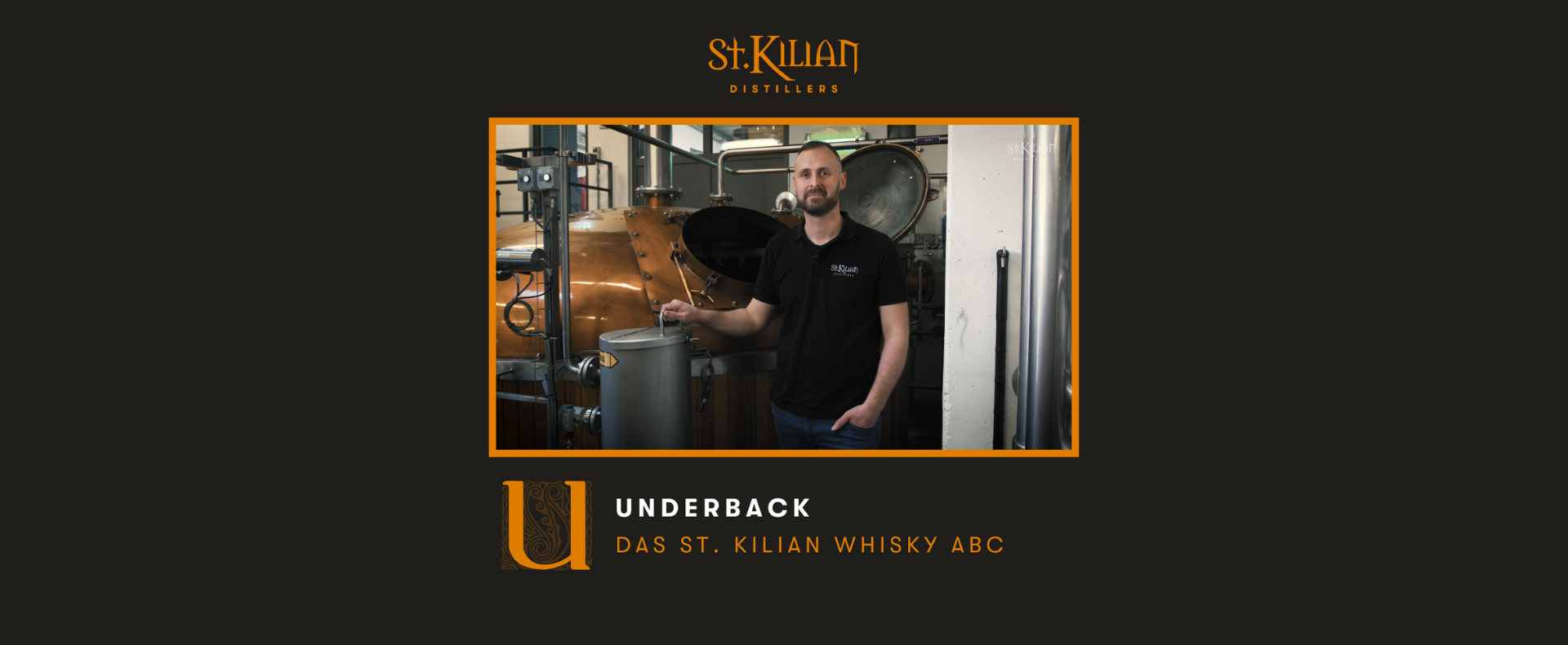U - like underback

What does the word underback mean?
Literally translated, the English term underback means something like a buffer ("back") connected to the lower end ("under") of a lauter tun.
What does an underback look like?
An underback is a simple tube at the level of the lauter tun, the so-called mash tun. This pipe, through which the wort flows, is connected to the mash tun below its sieve bottom. In addition to a simple pipe, the underback can also be a larger tank, as is often found in Scottish distilleries.
What do you need an underback for?
The underback is used to control the lautering process in the distillery so that the wort runs off optimally through the sieve tray in the mash tun. In the mash tun, the milled barley malt is first mixed with hot water before, after a certain time, the solid components are separated from the liquid components via a sieve tray located in the lauter tun, which is classically referred to as lautering. The liquid components - the wort - leave the mash tun and enter the underback. In an optimum lautering process, the liquid level in the underback should be at the same level as that in the lauter tun. The underback thus corresponds to the principle of communicating tubes. During lautering, however, the sieve tray in the Mash Tun can become so clogged by the compacting filter cake (spent grains) that the wort drains only slowly or finally not at all. In this case, the liquid levels in the underback and in the mash tun are no longer at the same level but at different levels.
What happens when the sieve bottom becomes clogged?
A difference in level in the underback visible to the naked eye thus indicates a less than optimal course of lautering in the Mash Tun and requires readjustment of the wort run-off speed. If, on the other hand, the sieve bottom is completely clogged by the compacted spent grains in the lauter tun, the production team can loosen it up by switching on an agitator chopper and thus restore its permeability for the remaining wort.
Can the lautering be controlled in any other way?
The underback is the original, analog way of controlling lautering in the Mash Tun. The modern, digital variant is a control by means of the so-called differential pressure measurement, which is also installed in the Mash Tun at St. Kilian. By means of sensitive pressure sensors, the difference between the pressure above and below the screen, which occurs as a result of a compression of the spent grains during lautering, can be measured and indicate a necessary intervention of the production team. Compared to the classic underback, this digital measurement is the simpler and also more convenient method.